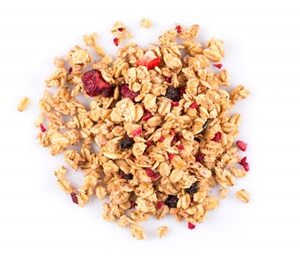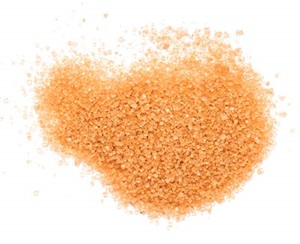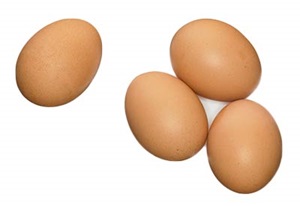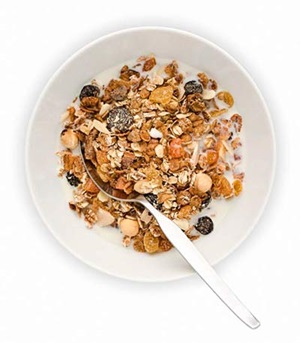Get ready for a selection of our most popular nutritious breakfast recipes for the whole family. These are easy and quick to prepare and absolutely delicious! Whether you’re sitting down to eat or need a healthy option on the go, start your day the right way.
But before we get into that, let’s look at what makes a ‘healthy breakfast’.
What is a healthy breakfast (and why is it important)?
There are lots of differing opinions floating around when it comes to breakfast, so we’re here to help you make better choices.
Breakfast and weight loss
Firstly, it’s important to say that everyone is different and has unique dietary requirements. These are general guidelines and suggestions, and for a tailored suggestion, you should speak with a nutritionist, dietician or health professional.
Eating breakfast breaks your body’s overnight fast, (see what we did there?). A healthy breakfast kick starts your body’s metabolism, helps you regulate your blood sugar so your brain can focus, and sets you up for your day. In fact, regularly eating breakfast is better for your overall health and for lowering your body mass index or BMI.
By eating a healthy, nutritious breakfast, you’re less likely to feel peckish and tempted to snack during the day. Plus you won’t be thinking about wolfing down lunch by 11am. Just think about all the mid-morning, mid-afternoon, and late night snacks you eat versus one healthy breakfast. Skipping that meal to try and lose weight may not actually be the smartest choice.
How many calories should we eat for breakfast?
General calorie guidelines
You can definitely eat well and lose weight. Of course, calorie counting can be important, but you also need to make sure that your diet is full of the nutrients your body needs.
A healthy breakfast for an adult is considered to be between 350 to 500 calories. Why? Depending on when you ate dinner, your body may have gone without food for 12 hours. There’s not enough glucose in your brain, you’re feeling sluggish and your metabolism needs fuel to get it kick-started.
Health star ratings

The New Zealand and Australian Governments, plus some public health and food experts all worked together to create the Health Star Ratings that you see on the front of some packaged foods.
The Health Star Rating looks at the ingredients, nutrients, and the amount of energy (kilojoules) it provides in a serving. Foods are more nutritious and get a better rating when they have low saturated fats, sugar and salt, and are higher in fibre, fruits, vegetables, nuts and protein.
The Health Star Rating should only be used as a comparison tool on similar foods. If you’re looking at two packets of muesli and want to know which breakfast food is healthier, the Health Star Rating will tell you if one has more sugar than the other. Looking at the Health Star Rating to compare a jar of peanut butter with a box of porridge just won’t give you a clear answer.
What types of food are ‘healthy’ to eat for breakfast?

Choose whole foods
To help you make healthier breakfast choices, look at the ingredient list. As a general rule, the fewer ingredients listed, the more nutritious the breakfast food is because it’s not as processed. If the ingredients are ‘whole’ or ‘wholegrain’ that’s also a good sign the food is not processed or refined.
For example, oats are 100% whole-grain. But, a bag of whole oats is less processed and contains less sugar than pre-packed porridge mix.

Skip the sugar
Unfortunately, lots of ready-to-eat ‘ options like cereal, breakfast bars, yoghurt or juice contain lots of sugar. They give your body the boost it needs to get out the door, but by mid-morning you’re crashing from your sugar high and starting to think about snacks.
Ideally, your breakfast cereal should have 9 grams of added sugar or less per serving. Again, look for unsweetened varieties of yogurt, almond milk, or dairy products. Reducing the amount of sugar you add to your morning cup of tea and coffee is another good place to start.

Pack in protein and produce
It’s hard to think of life without them now, but breakfast cereals are a relatively new invention. Around a hundred years ago, what New Zealanders ate for breakfast looked a lot like what we eat for lunch and dinner.
Eggs have been a healthy breakfast food for the longest time, and for good reason. Eggs don’t need a lot of preparation time, plus they’re full of protein. Just one scrambled egg has 6 grams of protein, which helps you feel full for longer.
Could you turn that scrambled egg into an omelette or frittata by adding some leftover chopped vegetables from the night before? A little capsicum for vitamin C, fresh tomato for antioxidants and potassium, and smashed avocado for B vitamins and healthy fats. You could also use those same ingredients with a poached egg instead of mozzarella in this delicious avocado caprese breakfast toast recipe.

Breakfast cereals
Healthy and quick is possible if you’re on the go. A bowl, a spoon and a splash of milk may be all you need. But, when deciding which breakfast cereal to add to the mix, look for one that’s high in fibre, low in sugar and low in fat. Fibre gives you the long-lasting, slow burning energy to keep you at your peak all morning.
A breakfast cereal that’s high in fibre should have at least three grams of fibre in a 30 gram serving. As a comparison, a cereal is thought to be high in fat if it’s more than 2.3 grams in a 30 gram serving. If there’s more than two teaspoons of sugar in a 30 gram serving, it’s probably not a healthy breakfast choice.
Healthy breakfast recipes
Need some quick and healthy ideas for the most important meal of the day? Kids will love these recipes and ingredients too and many can be prepared for breakfast on the go.
Here are some tasty and nutritious breakfast suggestions to start your day right.
Porridge or oatmeal
Quick and easy, porridge can be eaten hot or cold, and when it comes to toppings you’re only limited by your imagination.
For a healthier porridge option, choose 100% rolled oats. They are whole grain, jam-packed with fibre, plant proteins and minerals like iron, calcium and magnesium. Your gut and your digestive system need plenty of fibre to stay healthy, so choose porridge for breakfast and your stomach will thank you.

Omelettes and eggs
People have loved eggs for breakfast for as long as there have been mornings. Packed with protein, quick and easy to cook, there are so many ways you can enjoy eating an egg. Because our bodies take longer to digest protein than carbs, an egg for breakfast will keep you feeling full for longer, so you can keep firing on all cylinders.

Yoghurt
Your gut will thank you for eating unsweetened or Greek style probiotic yoghurt. As well as the good bacteria your digestive system loves, yoghurt is a fantastic source of calcium, protein and vitamin D.
Crunchy yoghurt
Muesli
Not all muesli is created equal. By eating muesli you may think you’re choosing a healthy option, when it’s actually packed with sugar. The nutritiousness of your muesli all comes down to the ingredients in your muesli and what you’re using to add flavour.

Breakfast Muesli Bars
Most of the pre-packed muesli bars are packed with chocolate and sugar so your kids are more likely to eat them. With these delicious home-made recipes, you can create a breakfast or morning tea snack everyone will enjoy. There’s a bit more cooking and prep time involved, so make a big batch to last the week.

Smoothies
With yoghurt and a blender, a breakfast smoothie can be anything you want it to be. If you really don’t have time in the mornings, these tasty and nutritious breakfast drinks can be enjoyed in your keep-cup as you’re walking out the door. When it comes to healthy breakfast smoothie options, you’re only limited by your imagination.

Toast
Wholemeal bread can be a great source of fibre, but that doesn’t mean you have to be limited by your standard spread options. In fact, toast can be the base for a number of savoury and sweet healthy breakfast ideas.

Healthy pancakes
Normally considered a ‘sweet treat’ we have some pancake ideas that taste delicious without carrying all the unwanted calories. Some ideas are simple, like adding oats to your pancake mix, while others make smarter choices about traditional pancake toppings. Some of these recipes can even be prepared the night before, so your kids can enjoy hot pancakes before heading off to school.


